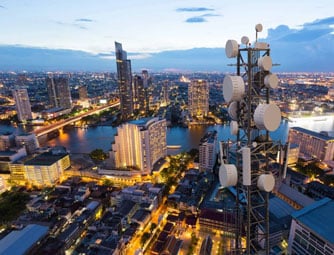Why CBRS Matters
August 8, 2023

Introduction to CBRS
As technology advances, the demand for robust, reliable, high-speed connectivity continues rising. Amid the myriad of solutions striving to meet these demands, a standout contender has emerged – the Citizens Broadband Radio Service, or CBRS. You may have encountered the buzz around CBRS, but what exactly is CBRS, and why should it matter to you?
In this non-technical post, we will delve into the intricacies of CBRS, explore its potential implications, and understand why it’s becoming a game changer in the realm of wireless communication.
CBRS: Unpacking the Acronym
CBRS stands for Citizens Broadband Radio Service. It’s a fancy term, but don’t let it intimidate you! In uncomplicated words, CBRS is a specific chunk of the radio frequency spectrum in the United States that the government has recently opened for shared use.
It’s like your local community park. Previously, large parts of it were reserved for specific groups or activities. But now, the park (or, in our case, the radio frequency spectrum) is accessible to everyone — private companies, small businesses, and even individuals like you and me.
The Spectrum Dynamics
The radio frequency spectrum is a finite resource and a critical wireless communication component. Different frequency bands are suited for various applications, depending on their characteristics. Lower frequencies have better range but lower data rates, whereas higher frequencies support higher data rates but have a limited range and struggle with obstacle penetration.
One band in the spotlight is the 3.5 GHz band (specifically, the 3550 MHz to 3700 MHz portion), where our new player, CBRS, lives.
Before CBRS, this portion of the spectrum was primarily reserved for government use, including the U.S. Navy’s radar systems. They’ve now made this portion of the spectrum available to others, allowing for shared use while ensuring no interference with incumbent users. This shared spectrum falls under what is called mid-band and respectively referenced as B48 (LTE), and N48 (5G). Yes, that’s correct CBRS can operate in the current 4G-LTE and emerging 5G NR (New Radio) service.

Understanding the Tiered Sharing Use
As mentioned, this “shared use” band is accessible to everyone and controlled fairly by what’s called a SAS (Spectrum Access System); keeping this blog as a technology introduction, let’s look at the SAS as a four-way traffic light, basically controlling the flow of traffic. This innovative approach to spectrum allocation is known as dynamic spectrum sharing.
The FCC has proposed a three-tiered framework for this:

- Incumbent Access: This includes existing federal and non-federal users with priority spectrum access. They are protected from harmful interference by the other tiers.
- Priority Access Licenses (PALs): These are for entities that acquire licenses for a portion of the spectrum through an auction process. They are protected from General Authorized Access users but must not cause interference to Incumbent users.
- General Authorized Access (GAA): This tier can use any portion of the 3.5 GHz band not assigned to the above tiers. They don’t require a license and are subject to interference from the other tiers.
The Impact and Potential of CBRS
CBRS unlocks massive potential for a host of applications. It allows enterprises to set up their private LTE (and eventually 5G) networks, offering them greater control over their wireless communication without relying on telecom providers. The economic GAA tiered spectrum can provide services like rural broadband, bridging the digital divide. CBRS is typically referenced as the solution for Industry 4.0 applications like manufacturing. Still, it also supports logistics, healthcare, and hospitality, which stand to benefit significantly, as they can leverage CBRS for various IoT applications, real-time data transfer, automation, and more, improving overall efficiency and productivity.
As CBRS technology matures and proliferates, we will see an increasingly diverse and robust landscape of high-speed, reliable wireless connectivity solutions.
At NextGen | GTA A Kelly Telecom Company, we have significant experience designing and deploying CBRS for commercial and private networks. Our team of experts has been part of the CBRS ecosystem from its inception and has helped our customers choose the best possible solution for their networks.






























